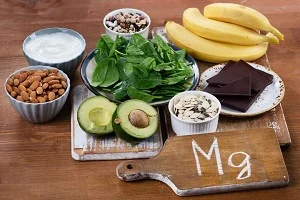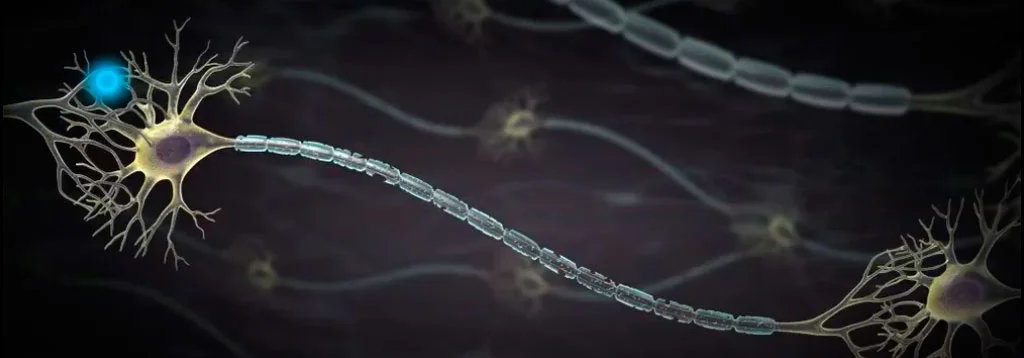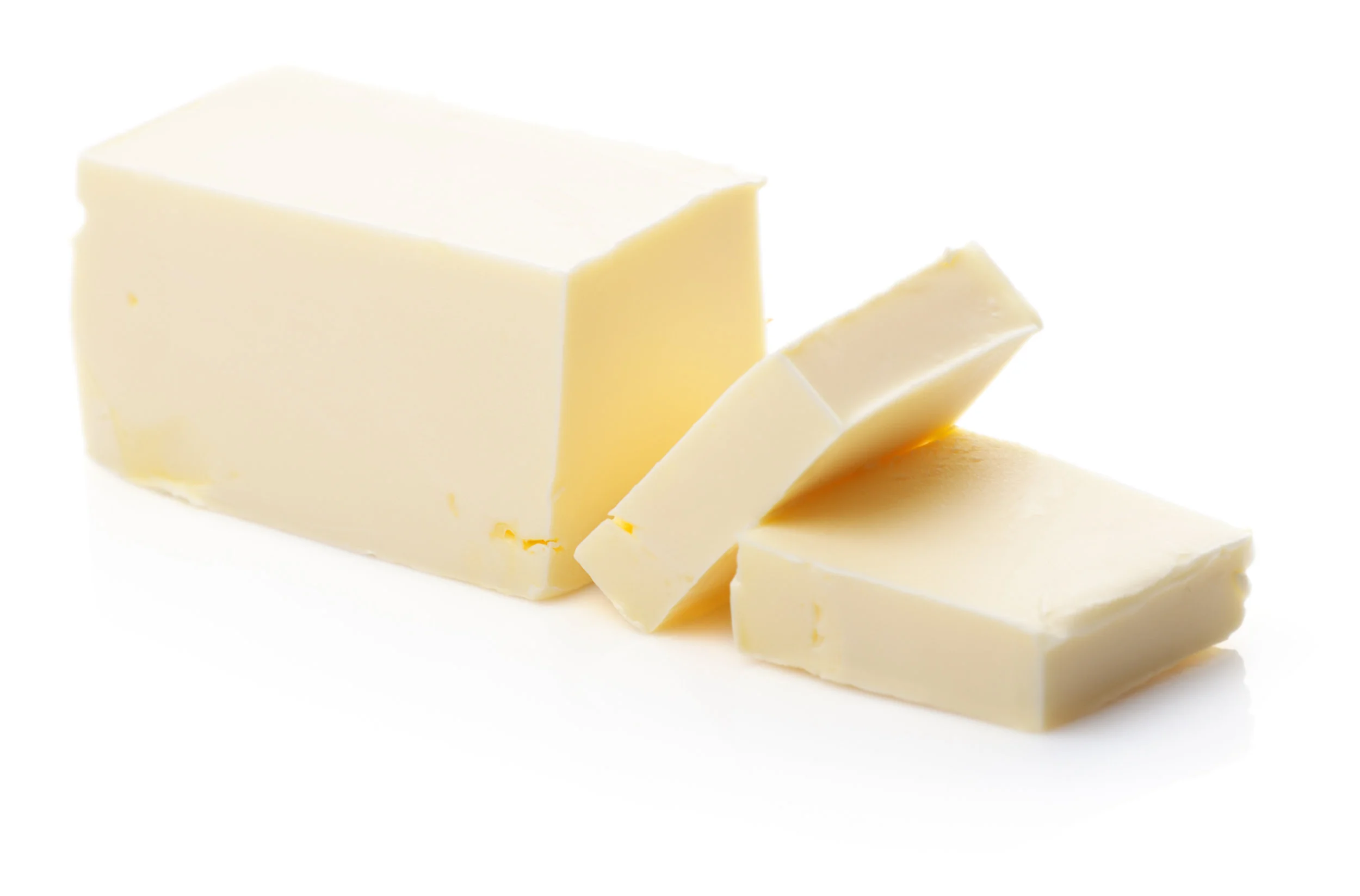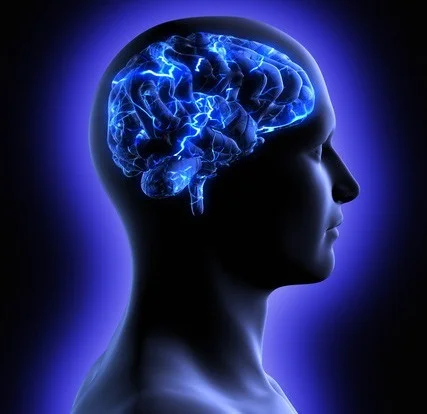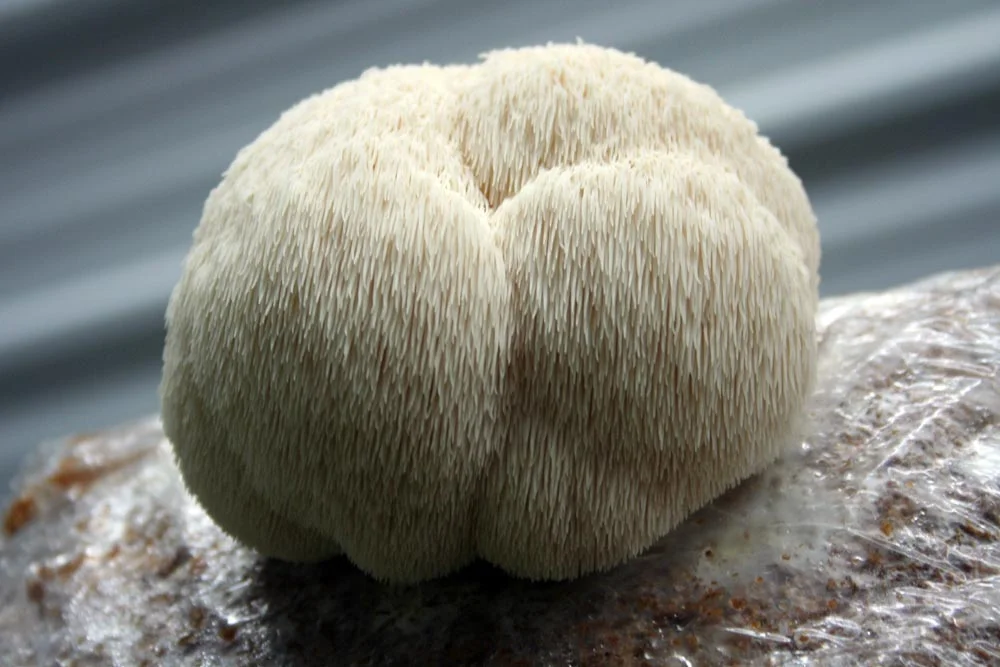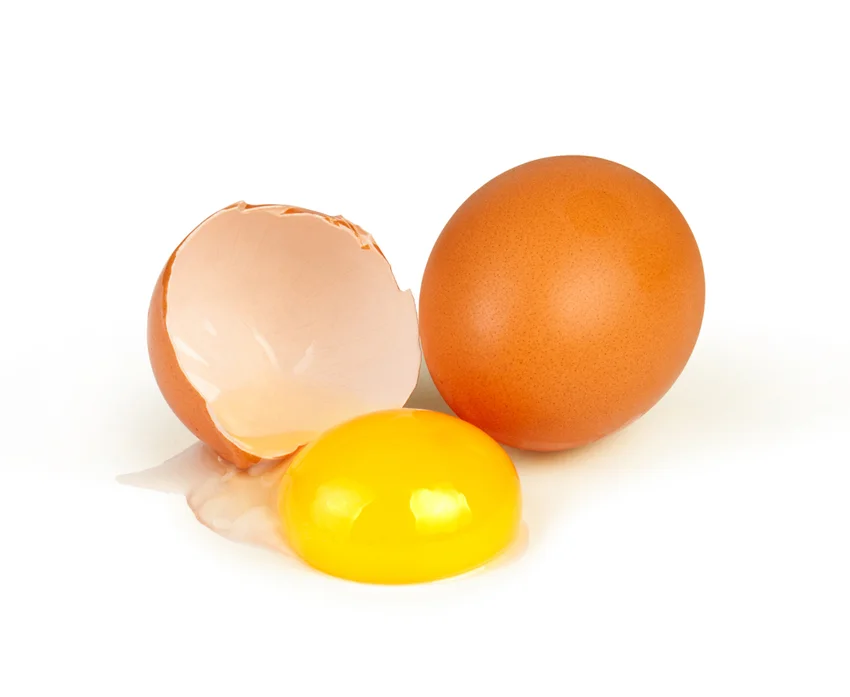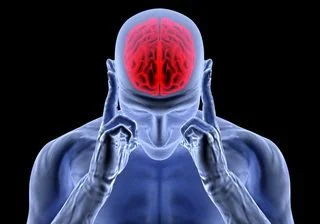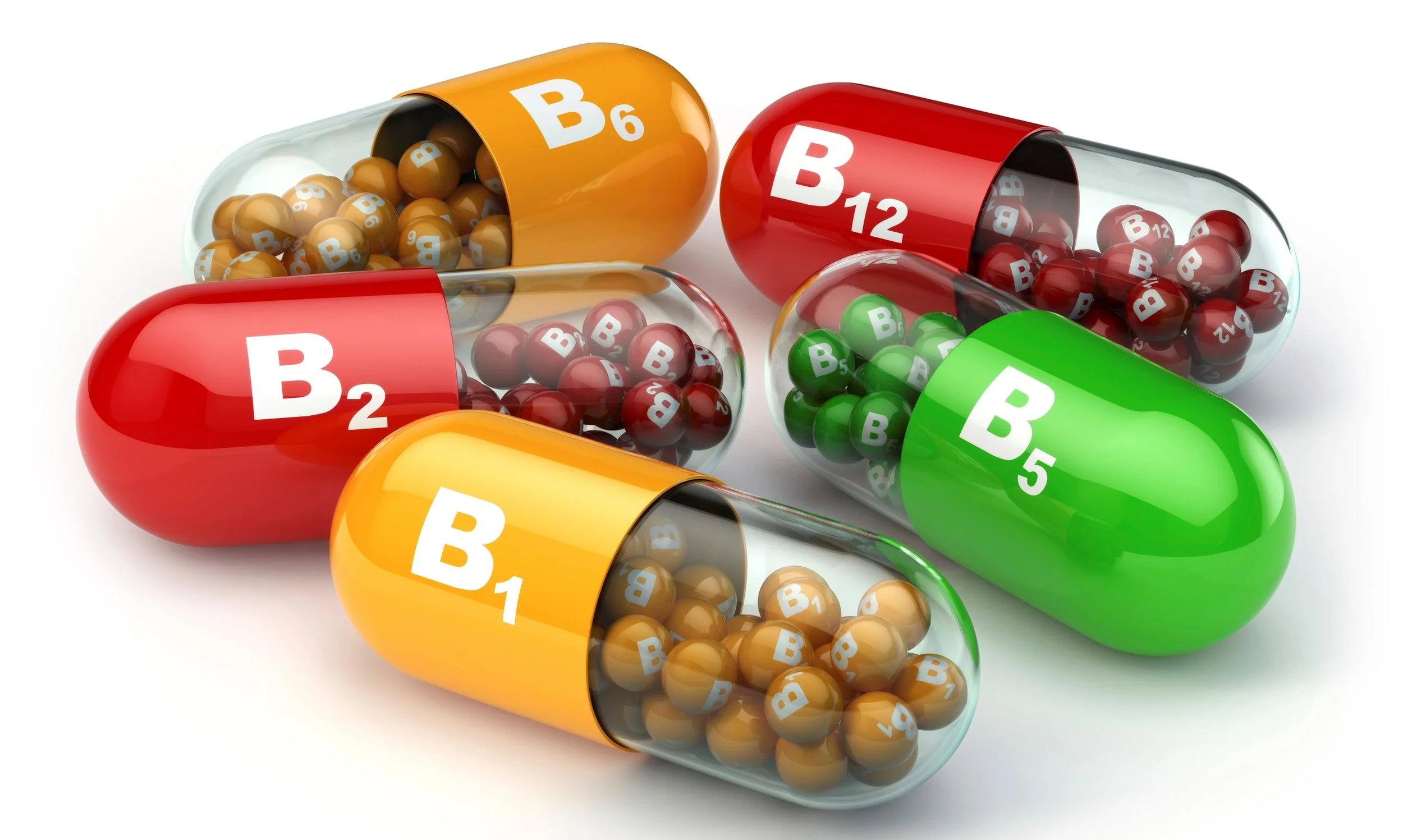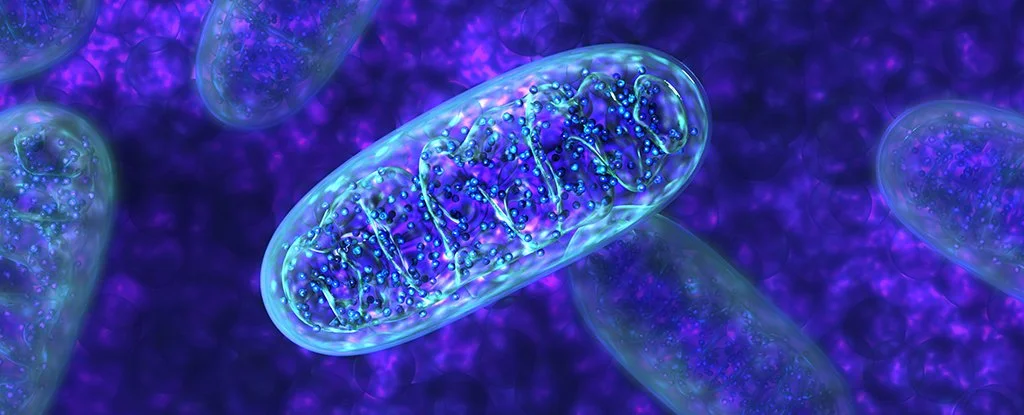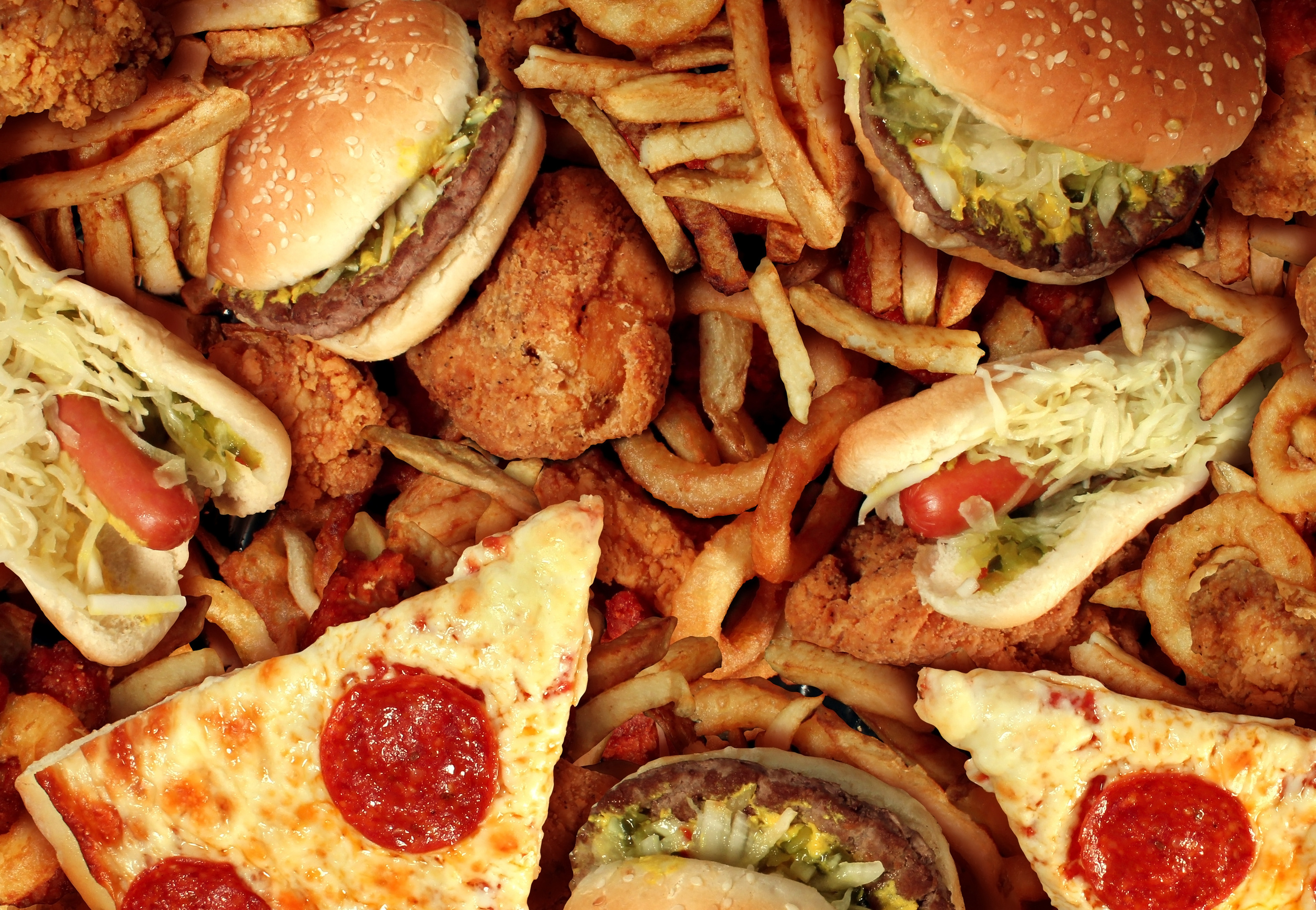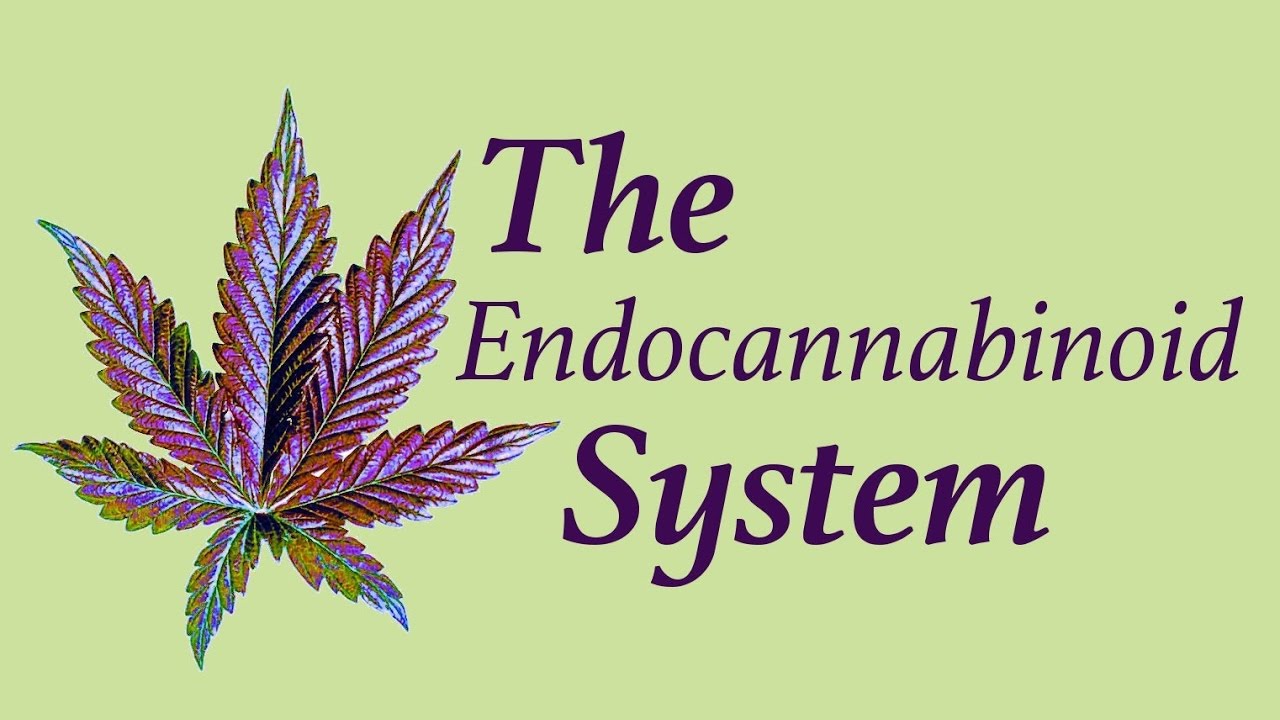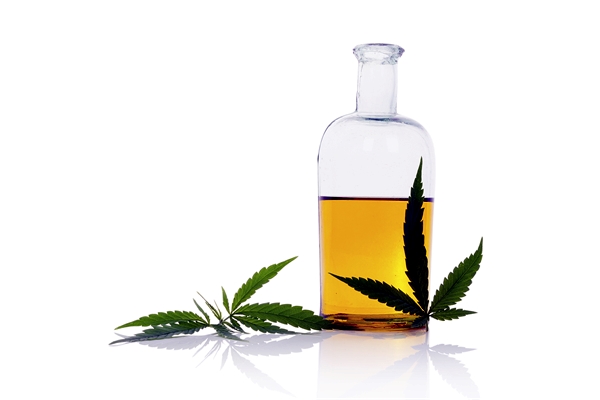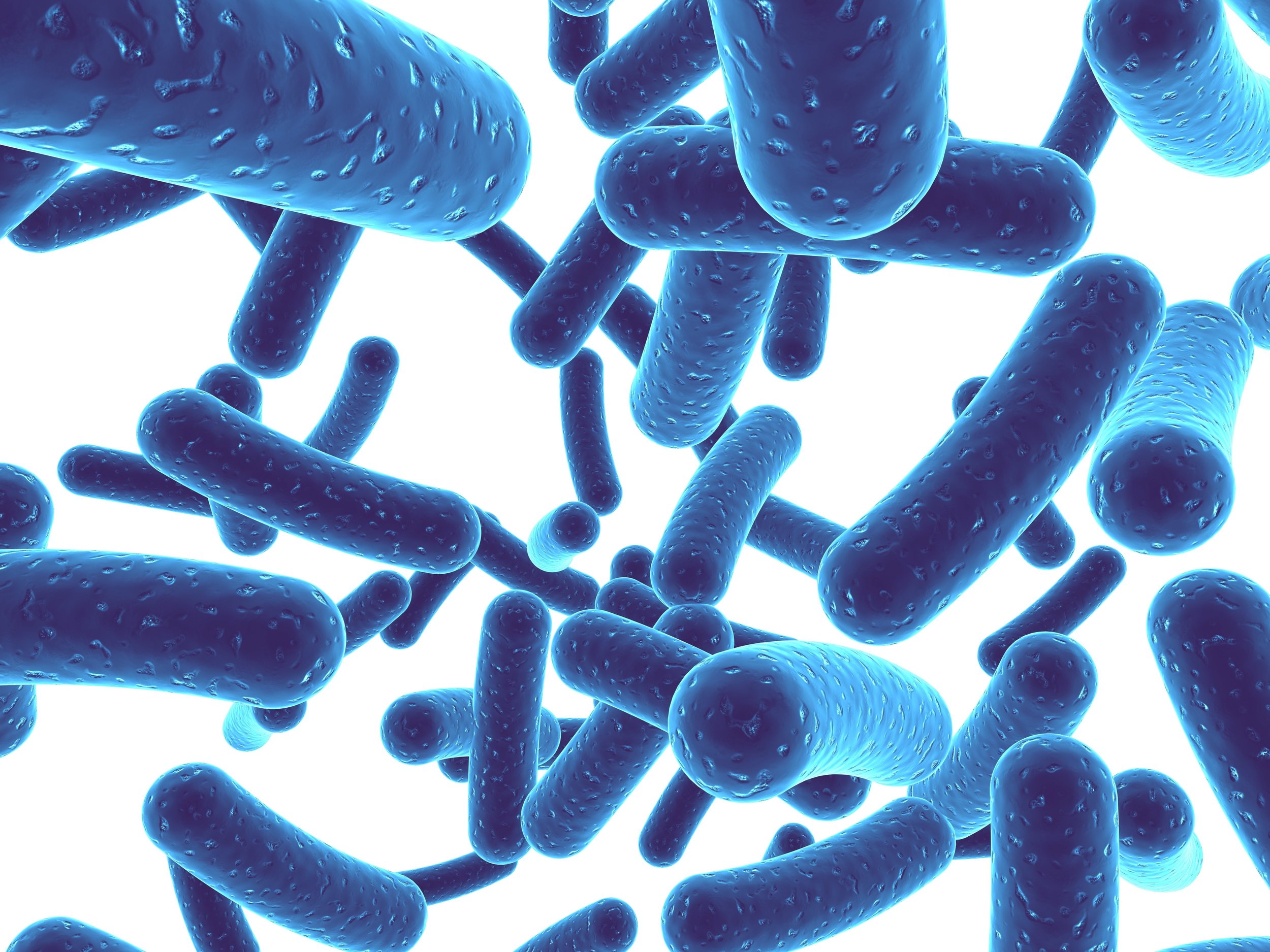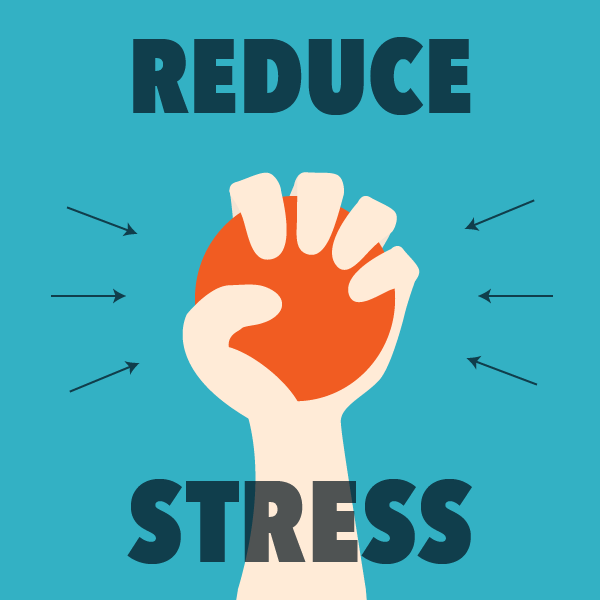Oxytocin is a powerful hormone and neurotransmitter.
It’s often called the “love hormone" or “cuddle chemical” because it plays a key role in the emotional bond between a mother and her child.
It’s also released by both men and women when they are in love (116-118).
But it isn’t just involved in loving relationships.
It can also significantly affect the functioning of your brain and nervous system and impact your emotions day-to-day.
Low levels of oxytocin in the brain are associated with several mental health conditions, including depression, anxiety, social phobia, autism, schizophrenia, post-traumatic stress disorder, tinnitus, anorexia nervosa, and borderline personality disorder (120-135).
And research suggests that if you increase oxytocin, it can lead to the following benefits:
Reduce stress and anxiety and increase feelings of calmness and security. It does this by suppressing activity in the amygdala, the fear centre of your brain (136-149).
Improve mood and increase feelings of contentment (150-157).
Stimulate the vagus nerve and increase heart rate variability (158-161, 170-171).
Reduce the release of cortisol, your body’s main stress hormone (162-165).
Reduce inflammation and accelerate healing (166-168).
Increase creativity (169).
Elevate pain threshold (172-173).
Reduce withdrawal symptoms and tolerance to addictive drugs (174-176).
Improve self-perception in social situations. It also increases enjoyment of social interactions by stimulating production of endocannabinoids (177-179).
Increase positive personality traits such as empathy, warmth, trust, and openness (180-181).
Oxytocin clearly does a lot.
Because of this, some doctors have started prescribing intranasal oxytocin spray to their patients to help them treat their symptoms (119).
But you don’t necessarily need to run to your doctor and ask for a prescription.
You can follow the 29 steps below and naturally increase your oxytocin levels yourself.
The Best Foods, Nutrients, Herbs and Supplements To Naturally Increase Oxytocin Levels in the Brain
1. Vitamin D
Vitamin D is a fat-soluble vitamin that your skin synthesizes when exposed to the sun. It can also be taken as a supplement.
Every tissue in your body has Vitamin D receptors, including the brain, so a deficiency can lead to costly physiological and psychological consequences.
Research shows that oxytocin is directly activated and controlled by Vitamin D (13-14).
Some researchers also believe that autistic children have low levels of oxytocin likely because they are deficient in Vitamin D (15-16).
Ideally, you should get your Vitamin D naturally from the sun.
It’s especially important to make sure you get some sunlight in the morning to set your circadian rhythm.
But most people still don’t get enough Vitamin D from the sun, and that’s why I recommend taking a Vitamin D supplement or using a Vitamin D lamp.
Researchers estimate that 50 percent of the general population is at risk of Vitamin D deficiency (12).
It's important to test and monitor your Vitamin D levels before and after supplementing with it.
Vitamin D also naturally increases dopamine levels in the brain, and being deficient in Vitamin D can make you more anxious and more depressed.
2. Vitamin C
Vitamin C is another easy way to optimize and increase your levels of oxytocin.
Researchers know that Vitamin C is a cofactor in the production of oxytocin, and the synthesis of oxytocin is dependent upon Vitamin C (17-18).
One study found that Vitamin C stimulates the secretion of oxytocin (19).
And another study found that supplementing with a high dose of Vitamin C increases the release of oxytocin, which then increases intercourse frequency, improves mood and decreases stress (20).
As you probably know, Vitamin C is found in fruits and vegetables such as green peppers, citrus fruits, tomatoes, cauliflower, Brussels sprouts, broccoli, and cabbage.
In addition to getting Vitamin C from fruits and vegetables, I take a supplement with some Vitamin C.
I’ve taken up to 10 grams daily, and it definitely improves my mood and reduces stress and anxiety.
Vitamin C is included in this supplement.
This is a shame because magnesium is absolutely essential for the proper functioning of your nervous system and optimal neurotransmitter activity.
Researchers have found that the oxytocin receptor requires magnesium to function properly, and magnesium increases the action of oxytocin at the receptor (39-42).
There are a number of things you can do to make sure you’re getting enough magnesium.
First, make sure you’re eating magnesium-rich sources of food on a regular basis, including spinach, chard, pumpkin seeds, almonds, avocado, dark chocolate and bananas. These foods are included in my Free Grocery Shopping Guide for Optimal Mental Health.
Epsom salt baths are another great way to increase your body’s intake of magnesium.
Magnesium supplements are also a good idea if you want to produce more oxytocin.
Magnesium is included in this supplement.
Besides supporting your oxytocin levels, magnesium can also naturally increase dopamine, reduce your anxiety, and help your overcome trauma, withdrawal and addiction.
4. Taurine
Taurine is an organic compound found in food, particularly animal products. It has a wide variety of health benefits.
It can cross the blood-brain barrier, improve mood and produces anti-anxiety effects (1-10).
Researchers believe that one of the ways it improves mood and reduces anxiety is by naturally increasing the release of oxytocin in the brain (11).
Taurine is included in the Optimal Calm supplement.
5. Caffeine
Researchers have found that caffeine significantly increases the release of oxytocin (21-23).
Perhaps this is one reason why people love getting together with friends for a coffee.
Coffee usually makes me sick because I’m extremely sensitive to mold and most coffee contains high amounts of mycotoxins (toxic metabolites produced by mold).
But some coffee doesn’t. I usually drink one cup of high-quality coffee most mornings. I can also tolerate pure caffeine tablets.
Most people can tolerate regular coffee just fine. But if coffee makes you feel terrible and jittery, it might be the quality of the coffee. Consider trying higher-quality coffee, or simply take pure caffeine, and see how you feel. You’ll likely feel better than if you consumed low-quality coffee.
Coffee and caffeine can disrupt sleep though, so make sure you don’t drink it later in the day. I have my last cup sometime between 10 in the morning and noon. If I have it any later than that, it disrupts my sleep.
Lastly, it's also a good idea to try to consume the whole coffee fruit, instead of just the coffee bean or pure caffeine.
Traditionally, the coffee bean is extracted from the coffee fruit for roasting. And the surrounding fruit is discarded.
But that’s a huge problem.
Because the coffee fruit contains several healthy compounds not found in coffee beans themselves.
And after years of careful clinical research, scientists have discovered that ingesting whole coffee fruit concentrate significantly increases brain function.
Coffee fruit concentrate is included in the Optimal Brain supplement.
6. Estrogen
Estrogen is the primary female sex hormone and responsible for the development and regulation of the female reproductive system.
Estrogen has been found to increase the synthesis and secretion of oxytocin. It also increases the expression of oxytocin receptors in the brain (30).
Other studies show that even just a single dose of estradiol can significantly increase circulating oxytocin levels and reduce anxiety (31-32).
I recommend both men and women get their hormone levels checked regularly, and then optimize them with hormone replacement therapy, especially if they want to produce more oxytocin and feel their best.
Not only can replacing estrogen increase your oxytocin levels, but it can also really improve your overall quality of life.
7. Lactobacillus Reuteri
Lactobacillus reuteri is a bacterium with anti-inflammatory effects that scientists first discovered in the 1980s.
It’s one of the most promising psychobiotics for anxiety.
Research shows that Lactobacillus reuteri significantly increases oxytocin levels in the brain through the vagus nerve (26-29).
Lactobacillus reuteri is usually found in the human gut. However, not all humans have it, and some people simply have very low levels of it.
Therefore, you may need to supplement with it to introduce and maintain high levels of it, especially if you want to produce more oxytocin.
One study found that the absence of lactobacillus reuteri causes social deficits in animals. By adding it back in to the guts of the animals, the researchers were able to reverse some of their behavioural deficits, which were similar to symptoms of social anxiety and autism in humans (24-25).
Lactobacillus reuteri is included in the Optimal Biotics supplement.
It's also found in breast milk, and some meat and dairy products.
8. Chamomile
You can also increase oxytocin with herbs, such as chamomile.
Chamomile is a medicinal herb that has been traditionally used for its calming and anti-inflammatory properties.
But it can also help you produce more oxytocin.
Animal studies show that chamomile contains substances that act on the same parts of the brain and nervous system as anti-anxiety drugs (47-48).
Researchers also know that chamomile naturally increases oxytocin and lowers cortisol (49).
9. Oleoylethanolamide (OEA)
Oleoylethanolamide (OEA) is a molecule produced in the body. It’s responsible for the feeling of being full after meals and may help with weight loss.
Multiple studies show that OEA naturally stimulates the secretion of oxytocin and increases levels of oxytocin in the brain (50-54).
I haven’t tried it yet, but there are OEA supplements available online.
I’m going to try it and report back on how I feel. We’ll see if it helps me produce more oxytocin.
10. Melatonin
Melatonin is a natural hormone released by your pineal gland, a small gland in your brain. It helps control your sleep and wake cycles (circadian rhythm), and adequate levels of melatonin are necessary to fall asleep quickly and sleep deeply throughout the night.
More than one study has shown that 500 mcg of melatonin significantly increases secretion of oxytocin (33-35).
You can find supplements with 500 mcg of melatonin online.
Or you can take this sleep supplement, which contains magnesium and a number of other natural compounds that I’ve used over the years to promote the production of melatonin.
Besides melatonin and sleep supplements, there are a number of other actions you can take to naturally produce more melatonin.
I work with my clients so that they can naturally produce more melatonin and maximize the quality of their sleep without so many supplements. We have free online workshop that talks about how you can work with us. You can register for the workshop here.
11. Fenugreek
Fenugreek is one of the most popular herbal supplements that has been traditionally used to enhance sex drive.
It also demonstrates antidepressant and anti-anxiety effects in animals, and naturally produces more oxytocin in humans (55-57).
I once experimented with a fenugreek supplement and I liked the effects. It felt like I produced more oxytocin when I was taking it, but I no longer take it regularly because all my other lifestyle habits are more than enough.
Fenugreek seeds are another option. They can be eaten whole, brewed into a tea, or even made into flour and baked into a gluten-free bread.
12. Jasmine Oil (Jasminum Officinale)
Jasmine Oil is a popular essential oil derived from the Jasminum Officinale flower.
It’s been used for hundreds of years in Asia to improve mood, manage emotional stress and anxiety, and improve sex drive and sleep.
There is lots of research that suggests that it has positive affects on the nervous system (59-62).
And a systematic study found that aromatherapy with Jasmine Oil can increase levels of oxytocin (58).
After living in a moldy home, I researched and experimented with a number of essential oils. I found they supported my immune system and mood as I recovered. Here is the Jasmine Oil that I took.
It can either be inhaled through the nose or applied directly to the skin. You can also diffuse it in your home using a diffuser.
13. Clary Sage Oil (Salvia sclarea)
Clary Sage Oil is a relaxing essential oil derived from the Salvia sclarea plant.
It’s been shown to naturally relieve anxiety and depression by reducing cortisol and improving thyroid hormone levels (63-66).
And just last year, researchers found that inhaling Clary Sage Oil increases oxytocin in women during pregnancy (67-69).
After living in a moldy home, I researched and experimented with a number of essential oils. I found they supported my immune system and mood as I recovered.
Just like Jasmine Oil, it can either be inhaled through the nose or applied directly to the skin. You can also diffuse it in your home using a diffuser.
14. Anise Seed (Pimpinella anisum)
Anise, also known as Pimpinella anisum, is a plant found in the same family as carrots, celery and parsley.
The plant produces a small white fruit called anise seed.
It’s rich in nutrients and can be used a natural remedy for a number of different health concerns.
Research shows that anise seed can increase oxytocin in pregnant women (183).
In one study, it was effective reducing symptoms of postpartum depression (184).
But it doesn’t just work in new mothers who have postpartum depression.
Another study showed that taking anise oil can decrease depressive symptoms in men and women with mild to moderate depression (185).
Anise seed can be taken by adding it to desserts and drinks.
Or you can use anise oil like they did in the depression study above.
The Best Lifestyle Habits, Therapies and Practices to Naturally Increase Oxytocin Levels in the Brain
15. Touch
Not surprisingly, there is a ton of research showing that interpersonal touch quickly increases oxytocin levels in the brain (107).
This obviously includes kissing, cuddling, and sex. But non-sexual touch such as hugging and shaking hands increases oxytocin as well (105, 108-115).
A 10-second hug every day can help boost your immune system, fight infection, increase dopamine, reduce depression, and lessen fatigue (106).
But Dr. Paul Zak, author of the Trust Factor, recommends much more than just one hug every day; he recommends eight hugs every day.
So if you want to produce more oxytocin, get out there and start hugging people… just make sure it’s welcome by the other people. :)
16. Loving-Kindness Meditation
Loving-kindness meditation, or metta, is a meditation practice designed to enhance feelings of kindness and compassion for yourself and others.
While meditating, you repeat positive phrases to yourself, think positively of other people, and direct well-wishes and love towards them.
For example, you could close your eyes, simply think about a friend of family member, and repeat over and over that “they are wonderful”. Simply repeat this thought to yourself over and over, while pushing away any other negative thoughts that arise.
Researchers believe that you give yourself a boost in oxytocin when you do this and may even up-regulate oxytocin receptors (71).
You can learn how to practice it here or through this video.
Loving-kindness meditation can also help you overcome trauma.
17. Acupuncture
Acupuncture is an alternative treatment that has been shown to increase oxytocin levels (76).
Research has shown that acupuncture can affect the synthesis, release and action of several neurotransmitters and neuropeptides, including oxytocin (72).
Animal studies have also demonstrated that acupuncture elevates oxytocin concentration in certain brain regions (73-75).
I’m a really big fan of auricular acupuncture for producing more oxytocin. Auricular acupuncture is when needles are inserted into ear. I’d recommend trying to find a health practitioner in your area who provides it, especially if you’re weening off psychiatric medication. It really helped me the first time I came off antidepressants. I was surprised.
In my experience, ear acupuncture is more effective than regular acupuncture. I’m not sure why. I’ve just personally noticed more benefits from ear acupuncture.
I also use an acupuncture mat at home to relax before bed.
Acupuncture also naturally increases dopamine, stimulates the vagus nerve and increases blood flow to the brain.
18. Pets
Animals have a way of calming us, and it’s because they increase our oxytocin levels.
Research shows that just touching your pets lowers your blood pressure and increases your oxytocin levels.
One study found that oxytocin levels increased in both humans and dogs after just five minutes of petting. This may explain the emotional bonding between humans and dogs (77).
Even just staring into your dog’s eyes can trigger the release of oxytocin in the brain and increase your levels (78).
So if you’re trying to maximize your oxytocin levels, you should try to hang out with animals as much as possible, and consider getting a house pet if you don’t have one.
19. Massage
Research shows that massage can significantly increase oxytocin levels and reduce stress hormones (79, 83).
This is why I personally get a massage from a registered massage therapist every couple of months.
It’s important to note that one study found that a light massage is more effective at increasing oxytocin than a deep-tissue Swedish massage (80-82).
So you may want to ask your massage therapist to take it easy and give you a gentle rubdown.
20. Listen to Music and Sing
Music is actually healing and can have a calming effect on the brain by increasing oxytocin levels.
In one study, patients who underwent open-heart surgery listened to soothing music for 30 minutes one day after their surgery. And they had significantly higher levels of oxytocin compared to those who were simply told to rest in bed (86).
Slow-tempo music has also been shown to increase both oxytocin and heart-rate variability (88).
What’s even better is singing along with the music.
Researchers have found that singing for 30 minutes significantly increases oxytocin levels in both amateur and professional singers, regardless of whether they enjoyed singing the song (87, 91).
Perhaps this explains why mothers often sing lullabies to their newborn babies – it may encourage bonding by increasing the release of oxytocin.
Lastly, making music together in a group leads to a significant release in oxytocin and reduction in stress (89-90).
So if you play an instrument, put together a band and start jamming. You’ll started producing more oxytocin together! :)
21. Yoga
Yoga is a popular “mind-body” relaxation technique that increases the activity of your parasympathetic “rest and digest” nervous system.
Researchers believe it works because it increases oxytocin levels in the brain by stimulating the vagus nerve (85).
In one study, researchers found that yoga significantly increased oxytocin levels and improved socio-occupational functioning in patients with schizophrenia. The researchers concluded that yoga should be used to manage schizophrenia because of the improvement in oxytocin levels (84).
22. Socialize
I’ve already discussed how socializing can reduce cortisol and stimulate your vagus nerve.
And now I’ve learned that positive social interactions can also increase oxytocin levels (93).
Researchers have found that your brain releases more oxytocin during social contact and social bonding, and this can actually speed up healing from disease (92).
So if you want to produce more oxytocin, my advice is to talk to people whenever you get the chance, and hang out with your friends and family as much as possible. I should probably be taking my own advice here because I’m an introvert and don’t socialize too much.
But even just connecting through social media can increase oxytocin! It doesn’t necessarily need to be in person, although that’s definitely better.
23. Intermittent Drinking
You’ve probably heard of intermittent fasting. I’ve discussed it a lot in other articles.
But you likely haven’t heard of intermittent drinking.
The typical mainstream advice is to drink eight glasses of water every day.
I don’t follow that. I simply listen to my body and drink when I’m thirsty.
And it appears that simply taking breaks from drinking water can increase oxytocin levels.
Recent research shows that drought, and the “homeostatic disturbances” that lead to the “feeling of thirst”, activate specific oxytocin-producing parts of the brain (94-95).
Researchers believe that “intermittent bulk drinking” could increase oxytocin signalling, recover human trust, and increase health by reducing stress and inflammation (94-95).
If you think of it from an evolutionary perspective, this makes sense. Your ancestors likely consumed as much water as they could when they got the chance, but then went longer periods of time when they couldn’t and didn’t drink any water.
Just like intermittent fasting, intermittent drinking doesn’t necessarily mean you drink less water throughout the day though.
You can simply drink a lot of water whenever you get thirsty. And then you stop drinking any water until you are thirsty again.
That’s how all animals and human newborns behave. But we’ve been brainwashed to think we need to be sipping on water all the time.
Start intermittent drinking, and your oxytocin receptors will thank you.
24. Warm and Cold Temperatures
Exposing yourself to both warm and cold temperatures can also increase oxytocin levels.
Researchers have found that hot environments, warm temperatures and increased sweating activate specific oxytocin-producing parts of the brain (94-96).
Giving birth in warm water has also been shown to reduce the need for doctors to give women synthetic oxytocin during labour. This suggests the warm water naturally increases oxytocin levels (186).
But it’s not just warm water and warm temperatures that increase oxytocin.
Recent research also suggests that cold exposure significantly upregulates oxytocin levels in the brain (97-100).
So if you want to optimize your oxytocin levels, try pushing yourself outside your comfort zone and expose your body to the acute stress of extreme temperatures.
What I like to do is take a warm shower, but then finish it off with 1-2 minutes of cold.
Cold showers also stimulate the vagus nerve.
25. Eat (Healthy) Food
Eating food also increases oxytocin, and it’s easily accessible by anyone.
Food activates touch receptors in your mouth, which then stimulates the release of oxytocin (102).
And then when food reaches your gut, a hormone is released from the intestines that activates the vagus nerve, which then stimulates the release of more oxytocin in the brain (102-104).
This is why eating makes people feel calm and satisfied, and often opens them up for social interaction, bonding and attachment.
The obvious downside to all of this is that you may be tempted to overeat unhealthy foods to stimulate the release of oxytocin, so that you feel better and less stressed. And oxytocin is one reason why you may have a hard time breaking bad eating habits.
But don’t worry; just stick to the healthy foods included in my free grocery shopping guide and you won’t have a problem
26. Watch a Movie
Everyone loves a good movie.
And it’s probably because it increases oxytocin.
Research shows that compelling narratives cause the synthesis and release of oxytocin (101).
And this has the power to affect our attitudes, beliefs, and behaviours (101).
27. Give Someone A Gift
Everyone loves receiving a gift.
But it turns out that giving someone a gift benefits you, the gift-giver, as well.
Studies show that receiving and giving gifts increasing oxytocin levels in the brain.
28. Hypnosis
Hypnosis - also known as hypnotherapy or hypnotic suggestion - is a trance-like state.
When you’re in this state, you have heightened focus and concentration, and reduced peripheral awareness.
You’ll also have an enhanced capacity to respond to suggestion.
Hypnosis is usually done with the help of a therapist using verbal repetition and mental images.
Researchers believe that the benefits of hypnosis may be due to its oxytocin-increasing effects (182).
29. Volunteer
Volunteering is another excellent way to boost your own oxytocin.
A study published in the journal Hormones and Behavior found that charitable behaviour reduces stress and improves health by increasing oxytocin levels (187).
So get out there and volunteer at your local food bank already!
Enjoy This Article? You Might Also Like My FREE Food Guide for Optimal Brain and Mental Health!
References:
(1) https://www.ncbi.nlm.nih.gov/pubmed/4407108
(2) https://www.ncbi.nlm.nih.gov/pubmed/8915375
(3) https://link.springer.com/article/10.1007%2Fs00210-003-0776-6
(4) https://www.ncbi.nlm.nih.gov/pubmed/1846756
(5) https://www.ncbi.nlm.nih.gov/pubmed/11598776
(6) https://www.ncbi.nlm.nih.gov/pubmed/18676123
(7) https://www.ncbi.nlm.nih.gov/pubmed/18823590
(8) https://www.ncbi.nlm.nih.gov/pubmed/16540157
(9) https://www.karger.com/Article/Abstract/107687
(10) https://www.ncbi.nlm.nih.gov/pubmed/15240184
(11) https://www.ncbi.nlm.nih.gov/pubmed/14552874
(13) https://www.sciencedaily.com/releases/2014/02/140226110836.htm
(14) https://www.ncbi.nlm.nih.gov/pubmed/24558199
(16) https://www.ncbi.nlm.nih.gov/pmc/articles/PMC4848704/
(17) https://examine.com/supplements/vitamin-c/
(18) https://en.wikipedia.org/wiki/Oxytocin
(19) https://www.ncbi.nlm.nih.gov/pubmed/3668432
(20) https://www.ncbi.nlm.nih.gov/pubmed/12208645
(21) https://www.nature.com/articles/ncomms15904
(22) https://www.ncbi.nlm.nih.gov/pmc/articles/PMC5490268/
(23) https://www.ncbi.nlm.nih.gov/pubmed/28654087
(24) https://www.sciencedaily.com/releases/2016/06/160616140723.htm
(25) http://www.cell.com/cell/fulltext/S0092-8674(16)30730-9
(26) https://examine.com/supplements/lactobacillus-reuteri/#summary9-1
(27) http://journals.plos.org/plosone/article?id=10.1371/journal.pone.0078898
(28) https://www.ncbi.nlm.nih.gov/pubmed/27793228
(29) https://www.sciencedaily.com/releases/2016/06/160616140723.htm
(30) https://en.wikipedia.org/wiki/Oxytocin
(31) https://www.ncbi.nlm.nih.gov/pmc/articles/PMC4606117/
(32) https://www.ncbi.nlm.nih.gov/pubmed/1943752/
(33) https://www.ncbi.nlm.nih.gov/pubmed/12390335
(34) https://www.ncbi.nlm.nih.gov/pubmed/10594526
(35) https://www.ncbi.nlm.nih.gov/pubmed/9594418
(36) http://www.tandfonline.com/doi/abs/10.1080/00048670802534408
(37) http://www.ncbi.nlm.nih.gov/pubmed/10746516
(38) http://www.ncbi.nlm.nih.gov/pubmed/9861593
(39) http://en.wikipedia.org/wiki/Oxytocin
(40) https://www.sciencedirect.com/science/article/pii/001429996890191X
(41) https://www.ncbi.nlm.nih.gov/pmc/articles/PMC1135623/
(42) https://www.ncbi.nlm.nih.gov/m/pubmed/2539090/
(43) http://en.wikipedia.org/wiki/Oxytocin
(44) https://www.ncbi.nlm.nih.gov/pubmed/10795905
(45) https://www.ncbi.nlm.nih.gov/pubmed/12175921
(46) https://www.ncbi.nlm.nih.gov/pubmed/12436925
(47) https://www.herbwisdom.com/herb-chamomile.html
(48) https://www.ncbi.nlm.nih.gov/pubmed/21601431
(49) https://www.ncbi.nlm.nih.gov/pmc/articles/PMC5301993/
(50) https://www.hindawi.com/journals/bmri/2014/203425/
(51) https://www.ncbi.nlm.nih.gov/pubmed/20554860
(52) https://www.ncbi.nlm.nih.gov/pubmed/23959001
(53) https://www.ncbi.nlm.nih.gov/pubmed/20554860
(54) https://www.sciencedirect.com/science/article/abs/pii/S0196978113002775
(55) https://www.ncbi.nlm.nih.gov/pmc/articles/PMC4745208/
(56) https://www.ncbi.nlm.nih.gov/pmc/articles/PMC4561638/
(58) https://www.ncbi.nlm.nih.gov/pmc/articles/PMC4280734/
(59) https://www.ncbi.nlm.nih.gov/pubmed/20184043
(60) https://www.ncbi.nlm.nih.gov/pubmed/15976995
(61) https://www.ncbi.nlm.nih.gov/pmc/articles/PMC2529395/
(63) https://www.ncbi.nlm.nih.gov/pubmed/20441789
(64) https://www.ncbi.nlm.nih.gov/pubmed/24802524
(65) https://www.sciencedirect.com/science/article/pii/S0378874110002667
(66) http://online.liebertpub.com/doi/abs/10.1089/jmf.2012.0137
(67) https://www.ncbi.nlm.nih.gov/pmc/articles/PMC5721455/
(68) https://www.ncbi.nlm.nih.gov/m/pubmed/29216912/
(69) https://www.ncbi.nlm.nih.gov/pmc/articles/PMC4280734/
(70) https://www.ncbi.nlm.nih.gov/pubmed/7128545
(71) https://www.ncbi.nlm.nih.gov/pmc/articles/PMC4325657/
(72) https://academic.oup.com/qjmed/article/107/5/341/1563714 \
(73) http://www.acupuncture.com.au/articles/viewarticle.html?id=119
(74) https://www.sciencedirect.com/science/article/pii/S0143417907000522
(75) https://www.ncbi.nlm.nih.gov/pubmed/17664006
(76) http://aim.bmj.com/content/acupmed/20/2-3/109.full.pdf
(77) https://www.ncbi.nlm.nih.gov/pubmed/12672376
(78) http://science.sciencemag.org/content/348/6232/333
(79) https://www.ncbi.nlm.nih.gov/pubmed/23251939
(80) https://www.ncbi.nlm.nih.gov/pmc/articles/PMC3107905/
(81) http://online.liebertpub.com/doi/abs/10.1089/acm.2009.0634
(82) http://www.nytimes.com/2010/09/21/health/research/21regimens.html
(83) https://www.ncbi.nlm.nih.gov/pubmed/22775448
(84) https://www.ncbi.nlm.nih.gov/pubmed/24049210
(85) https://www.ncbi.nlm.nih.gov/pmc/articles/PMC3573542/
(86) https://www.ncbi.nlm.nih.gov/pubmed/19583647
(87) https://www.ncbi.nlm.nih.gov/pubmed/12814197
(88) http://journals.plos.org/plosone/article?id=10.1371/journal.pone.0189075
(89) https://www.ncbi.nlm.nih.gov/pmc/articles/PMC4179700/
(90) https://www.ncbi.nlm.nih.gov/pmc/articles/PMC4585277/
(91) https://www.nhttps://www.ncbi.nlm.nih.gov/pubmed/12814197bi.nlm.nih.gov/pubmed/12814197
(92) https://www.ncbi.nlm.nih.gov/pubmed/15219651
(93) https://en.wikipedia.org/wiki/Oxytocin
(95) https://www.ncbi.nlm.nih.gov/pubmed/27241263
(96) https://www.ncbi.nlm.nih.gov/pubmed/9924739 \
(97) https://www.ncbi.nlm.nih.gov/pmc/articles/PMC5768886/
(98) https://www.ncbi.nlm.nih.gov/pubmed/29375393
(99) https://www.ncbi.nlm.nih.gov/pubmed/20536333
(100) https://www.ncbi.nlm.nih.gov/pubmed/24002032
(101) https://www.ncbi.nlm.nih.gov/pmc/articles/PMC4445577/
(102) https://www.ncbi.nlm.nih.gov/pmc/articles/PMC4290532/
(103) https://www.ncbi.nlm.nih.gov/pubmed/12113268/
(104) https://www.ncbi.nlm.nih.gov/pubmed/7938364/
(105) http://en.wikipedia.org/wiki/Oxytocin
(106) https://goo.gl/B98Sbu
(107) https://www.ncbi.nlm.nih.gov/pubmed/9924739
(108) https://www.ncbi.nlm.nih.gov/pubmed/8135652/
(109) https://www.ncbi.nlm.nih.gov/pubmed/3782434/
(110) https://goo.gl/2noghs
(111) https://www.ncbi.nlm.nih.gov/pubmed/9949283
(112) https://www.ncbi.nlm.nih.gov/pubmed/8586300
(113) https://www.ncbi.nlm.nih.gov/pubmed/3654918
(114) https://www.ncbi.nlm.nih.gov/pubmed/12697037
(115) https://www.ncbi.nlm.nih.gov/pubmed/15740822
(116) https://www.ncbi.nlm.nih.gov/pmc/articles/PMC4606117/
(117) https://www.medicalnewstoday.com/articles/275795.php
(118) https://en.wikipedia.org/wiki/Oxytocin
(119) http://www.apa.org/monitor/2011/03/oxytocin.aspx
(120) https://goo.gl/dnqno9
(121) https://www.ncbi.nlm.nih.gov/pmc/articles/PMC4120070/
(122) https://www.ncbi.nlm.nih.gov/pubmed/25025656
(123) https://www.ncbi.nlm.nih.gov/pmc/articles/PMC2705963/
(124) https://www.ncbi.nlm.nih.gov/pubmed/19777562
(125) https://www.ncbi.nlm.nih.gov/pmc/articles/PMC5400019/
(126) https://www.ncbi.nlm.nih.gov/pmc/articles/PMC3402118/
(127) https://www.ncbi.nlm.nih.gov/pubmed/25262417
(128) https://www.ncbi.nlm.nih.gov/pubmed/23007624
(129) https://www.nature.com/articles/4001911
(130) https://www.ncbi.nlm.nih.gov/pubmed/29049935
(131) https://www.sciencedirect.com/science/article/pii/S0924933817301761
(132) https://www.ncbi.nlm.nih.gov/pubmed/24115458
(133) https://www.ncbi.nlm.nih.gov/pubmed/28983279
(134) https://www.medicalnewstoday.com/articles/275795.php
(135) http://www.sciencedirect.com/science/article/pii/S1550413107000691%20
(136) https://www.ncbi.nlm.nih.gov/pmc/articles/PMC4606117/
(137) https://www.ncbi.nlm.nih.gov/pubmed/16339042
(138) https://www.ncbi.nlm.nih.gov/pubmed/15821089
(139) https://www.ncbi.nlm.nih.gov/pubmed/21719680
(140) https://www.ncbi.nlm.nih.gov/pmc/articles/PMC1621060/
(141) https://www.ncbi.nlm.nih.gov/pubmed/14675803
(142) https://www.ncbi.nlm.nih.gov/pubmed/25262417
(143) https://www.ncbi.nlm.nih.gov/pmc/articles/PMC4325657/
(144) http://aim.bmj.com/content/acupmed/20/2-3/109.full.pdf
(145) http://www.ncbi.nlm.nih.gov/pubmed/15219651
(146) http://en.wikipedia.org/wiki/Oxytocin
(147) http://www.ncbi.nlm.nih.gov/pubmed/17617382
(148) https://goo.gl/pF8mSP
(149) http://www.sciencedirect.com/science/article/pii/S1550413107000691
(150) https://www.ncbi.nlm.nih.gov/pmc/articles/PMC4606117/
(151) https://www.ncbi.nlm.nih.gov/pubmed/23007624
(152) https://www.ncbi.nlm.nih.gov/pubmed/25025656
(153) https://www.ncbi.nlm.nih.gov/pmc/articles/PMC1621060/
(154) https://www.ncbi.nlm.nih.gov/pubmed/14675803
(155) https://www.ncbi.nlm.nih.gov/pubmed/25262417
(156) https://www.ncbi.nlm.nih.gov/pmc/articles/PMC3573542/
(157) http://en.wikipedia.org/wiki/Oxytocin
(158) https://en.wikipedia.org/wiki/Oxytocin
(159) https://www.ncbi.nlm.nih.gov/pubmed/3223304
(160) https://www.ncbi.nlm.nih.gov/pmc/articles/PMC4325657/
(161) http://aim.bmj.com/content/acupmed/20/2-3/109.full.pdf
(162) https://en.wikipedia.org/wiki/Oxytocin
(163) https://www.sciencedirect.com/science/article/pii/S235228951530031X
(164) http://www.ncbi.nlm.nih.gov/pubmed/15219651
(165) https://www.sciencedirect.com/science/article/pii/S235228951530031X
(166) https://www.ncbi.nlm.nih.gov/pmc/articles/PMC2888874/
(167) http://www.ncbi.nlm.nih.gov/pubmed/15219651
(168) http://en.wikipedia.org/wiki/Oxytocin
(169) https://www.ncbi.nlm.nih.gov/pubmed/26267407
(170) http://journals.plos.org/plosone/article?id=10.1371/journal.pone.0044014
(171) http://www.journalvetbehavior.com/article/S1558-7878(14)00176-2/abstract
(172) http://aim.bmj.com/content/acupmed/20/2-3/109.full.pdf
(173) https://www.ncbi.nlm.nih.gov/pmc/articles/PMC4276444/
(174) https://www.ncbi.nlm.nih.gov/pubmed/9924746
(175) https://www.ncbi.nlm.nih.gov/pubmed/24056025
(176) http://en.wikipedia.org/wiki/Oxytocin
(177) https://www.sciencedaily.com/releases/2015/10/151026171805.htm
(178) https://www.medicalnewstoday.com/articles/275795.php
(179) https://www.ncbi.nlm.nih.gov/pubmed/22012170%20
(180) https://www.ncbi.nlm.nih.gov/pubmed/22012170%20
(181) http://en.wikipedia.org/wiki/Oxytocin
(182) https://www.ncbi.nlm.nih.gov/pubmed/9924739
(183) https://www.ncbi.nlm.nih.gov/pmc/articles/PMC4561638/
(184) https://www.ncbi.nlm.nih.gov/pmc/articles/PMC4354059/
(185) https://www.ncbi.nlm.nih.gov/pubmed/26873392
(186) https://www.bmj.com/content/328/7435/314.full
(187) https://www.sciencedirect.com/science/article/abs/pii/S0018506X13000202



